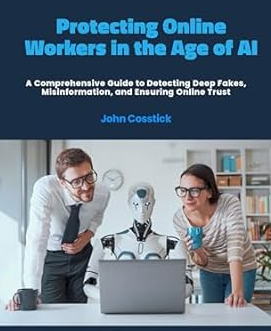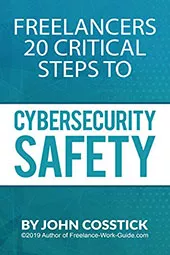As a Chief Information Security Officer (CISO), protecting an organization’s data is a top priority. With the increasing reliance on cloud computing, CISOs must be aware of the potential risks and threats associated with cloud environments.

The need for robust cybersecurity measures to safeguard sensitive information has never been more critical. Effective data protection strategies are essential to ensure the security of cloud infrastructure.
Key Takeaways
- Understand the importance of cloud security for CISOs.
- Identify potential risks and threats in cloud environments.
- Implement robust cybersecurity measures.
- Develop effective data protection strategies.
- Ensure the security of cloud infrastructure.
The Evolving Landscape of Cloud Security for CISOs
The cloud security landscape is in a state of constant flux, presenting CISOs with new challenges that demand adaptive security strategies. As organizations increasingly migrate their operations to the cloud, the complexity of cloud security grows, introducing a myriad of risks and threats.
Current Cloud Security Challenges
CISOs face numerous cloud security challenges, including data breaches, misconfigured cloud storage, and inadequate access controls. Data breaches remain a top concern, as they can lead to significant financial losses and reputational damage. Misconfigured cloud storage can expose sensitive data to unauthorized access, while inadequate access controls can allow malicious actors to move laterally within the cloud environment.
To address these challenges, CISOs must implement robust security measures, including encryption, multi-factor authentication, and continuous monitoring. By doing so, organizations can reduce the risk of data breaches and unauthorized access to their cloud resources.
The CISO’s Changing Role in Cloud Environments
The role of CISOs in cloud security is evolving, as they are now expected to be not only security experts but also strategic advisors to the business. CISOs must navigate the complexities of cloud security governance, ensuring that security policies and procedures are aligned with business objectives.
In cloud environments, CISOs are responsible for developing and implementing a comprehensive cloud security strategy that encompasses cybersecurity governance, risk management, and compliance. This requires a deep understanding of cloud security risks, as well as the ability to communicate effectively with stakeholders across the organization.
Understanding Cloud Security Risks and Threats
As cloud computing continues to evolve, understanding the risks and threats associated with it becomes increasingly crucial for CISOs. The cloud environment introduces a unique set of security challenges that organizations must address to protect their data and assets.
Common Attack Vectors in Cloud Environments
Cloud environments are vulnerable to various attack vectors, including phishing, malware, and denial-of-service attacks. These threats can compromise data integrity and availability, making it essential for CISOs to implement robust cyber defense strategies.
Data Breach Impact Assessment
A data breach can have severe consequences for an organization, including financial loss, reputational damage, and regulatory penalties. Conducting a thorough data breach impact assessment helps CISOs understand the potential risks and develop effective security incident response plans.
Emerging Threats in Cloud Computing
The adoption of emerging technologies like artificial intelligence and the Internet of Things in cloud computing introduces new security risks. CISOs must stay informed about these emerging threats and incorporate them into their risk management strategies to ensure the security of their organization’s cloud infrastructure.
Cloud Security Governance and Compliance
Cloud security governance and compliance are foundational elements for any organization leveraging cloud services. As organizations migrate more of their operations to the cloud, ensuring that these services are used in a secure and compliant manner becomes paramount.
Regulatory Requirements for Cloud Data
Organizations must comply with various regulatory requirements when storing and processing data in the cloud. These regulations can vary significantly depending on the jurisdiction and the type of data being handled.
GDPR, CCPA, and HIPAA Considerations
Key regulations include the General Data Protection Regulation (GDPR) for personal data of EU residents, the California Consumer Privacy Act (CCPA) for personal data of California residents, and the Health Insurance Portability and Accountability Act (HIPAA) for protected health information. Compliance with these regulations requires careful consideration of data storage, processing, and transfer practices.
- Data Residency: Ensuring that data is stored in compliance with relevant regulations.
- Data Protection: Implementing appropriate security measures to protect data.
- Data Transfer: Ensuring that data transfers comply with regulations such as GDPR.
Developing a Cloud Governance Framework
A robust cloud governance framework is essential for ensuring that cloud services are used securely and in compliance with relevant regulations. This involves several key steps:
- Defining clear policies and procedures for cloud service usage.
- Implementing controls to enforce these policies.
- Continuously monitoring compliance and adjusting policies as needed.
By developing a comprehensive cloud governance framework, organizations can better manage risks associated with cloud services and ensure compliance with regulatory requirements.
Cloud Security Risk Assessment and Management
For CISOs, implementing a comprehensive cloud security risk assessment and management plan is essential for data protection. This process involves identifying potential risks, evaluating their impact, and implementing strategies to mitigate them.
Identifying Critical Assets and Data
The first step in risk assessment is identifying critical assets and data. This involves understanding what data is stored in the cloud, how it is accessed, and its level of sensitivity. CISOs must classify data based on its importance and implement appropriate security measures.
Risk Evaluation Methodologies
Risk evaluation methodologies help CISOs understand the likelihood and potential impact of identified risks. Common methodologies include qualitative and quantitative risk assessments, which enable CISOs to prioritize risks and allocate resources effectively.
Implementing Risk Mitigation Strategies
Once risks are identified and evaluated, CISOs must implement risk mitigation strategies. This can include implementing security controls, conducting regular security audits, and developing incident response plans. Effective risk mitigation ensures the security and integrity of an organization’s cloud infrastructure.
Identity and Access Management in the Cloud
Cloud security hinges on effective identity and access management, a critical component that CISOs must prioritize. As organizations increasingly rely on cloud services, the need to manage who has access to what data becomes paramount.
Implementing Zero Trust Architecture
Zero Trust Architecture is a security concept that assumes that no user or device, whether inside or outside an organization’s network, can be trusted. Implementing Zero Trust involves verifying the identity and permissions of every user and device before granting access to data and applications. This approach significantly reduces the risk of data breaches by preventing unauthorized lateral movement within cloud infrastructure.Containerization security is
Privileged Access Management
Privileged Access Management (PAM) is crucial for controlling and monitoring access to sensitive data and critical systems. PAM solutions help CISOs manage privileged accounts, enforce least privilege access, and detect potential security threats. By implementing PAM, organizations can prevent unauthorized access and reduce the risk of insider threats.
Multi-Factor Authentication Best Practices
Multi-Factor Authentication (MFA) is a security process that requires more than one method of authentication to verify a user’s identity. Best practices for MFA include using a combination of something you know (password), something you have (token or smartphone), and something you are (biometric data). As noted by cybersecurity experts, “MFA is one of the most effective ways to prevent unauthorized access to cloud resources.”
“Using MFA can significantly reduce the risk of phishing and other cyber attacks,” said a leading cybersecurity researcher.
By implementing these identity and access management strategies, CISOs can significantly enhance their organization’s cloud security posture.

Data Protection Strategies for Cloud Environments
As organizations increasingly migrate their data to cloud environments, implementing robust data protection strategies becomes paramount. CISOs must prioritize the safeguarding of sensitive information against a backdrop of evolving security threats and stringent compliance requirements.
Data Classification and Handling
Effective data protection begins with data classification and handling. Organizations must categorize their data based on sensitivity and implement appropriate handling procedures. This ensures that sensitive data receives the highest level of protection, while less sensitive information is handled with commensurate security measures.
Encryption and Key Management
Encryption is a critical component of data protection in the cloud. By encrypting data both in transit and at rest, organizations can significantly reduce the risk of unauthorized access. Equally important is key management, which involves securely generating, distributing, and storing encryption keys.
Data Loss Prevention Technologies
Data Loss Prevention (DLP) technologies play a vital role in detecting and preventing unauthorized data transfers. By monitoring data in use, in motion, and at rest, DLP solutions can help organizations identify potential data breaches before they occur, enabling proactive measures to mitigate risks.
By implementing these data protection strategies, CISOs can significantly enhance their organization’s security posture in cloud environments, ensuring the confidentiality, integrity, and availability of their data.
Cloud Security Architecture and Design
Effective cloud security architecture is essential for safeguarding against evolving threats. A well-designed cloud security architecture serves as the foundation for a secure cloud environment, protecting organizational data and ensuring compliance with regulatory requirements.
Secure Cloud Network Design
A secure cloud network design is critical for preventing unauthorized access and data breaches. This involves implementing robust network segmentation, firewalls, and intrusion detection systems to safeguard against potential threats. Network segmentation is particularly important as it limits the attack surface by isolating critical assets and data.
Security by Design Principles
Security by design principles are integral to developing a robust cloud security architecture. This approach involves integrating security considerations into every stage of the design and development process, ensuring that security is not an afterthought but a fundamental aspect of the cloud infrastructure.
DevSecOps Integration
DevSecOps integration is a key component of security by design, emphasizing the collaboration between development, security, and operations teams. By integrating security into the DevOps pipeline, organizations can identify and address vulnerabilities early, reducing the risk of security breaches.
Containerization Security
Securing containerized environments is another critical aspect of cloud security architectureas containers are increasingly used in cloud environments. Ensuring the security of containerized applications involves implementing measures such as vulnerability scanning, runtime security monitoring, and secure container orchestration.
By adopting a holistic approach to cloud security architecture and design, organizations can better protect their cloud environments against evolving threats. This includes implementing secure cloud network design, adhering to security by design principles, and integrating DevSecOps practices and containerization security.
Security Monitoring and Incident Response in the Cloud
In the ever-evolving landscape of cloud computing, security monitoring and incident response play a vital role in safeguarding sensitive data. As organizations increasingly rely on cloud services, the need for robust security measures becomes paramount.
Cloud Security Monitoring Tools and Techniques
Effective cloud security monitoring involves utilizing advanced tools and techniques to detect potential security incidents. Cloud security monitoring tools can help track user activity, identify anomalies, and alert CISOs to potential threats. Techniques such as log analysis and real-time monitoring are crucial for maintaining visibility into cloud environments.
Developing an Effective Incident Response Plan
An incident response plan is essential for minimizing the impact of security breaches. CISOs should develop a comprehensive plan that includes incident response procedures, communication strategies, and containment measures. Regular drills and updates to the plan ensure readiness in the face of evolving threats.
Threat Intelligence Integration
Integrating threat intelligence into cloud security monitoring enhances an organization’s ability to anticipate and respond to emerging threats. By staying informed about the latest vulnerabilities and attack vectors, CISOs can proactively strengthen their security posture.
By combining advanced cloud security monitoring tools, effective incident response planning, and threat intelligence integration, CISOs can significantly enhance their organization’s cybersecurity resilience in the cloud.
Vendor Risk Management for Cloud Service Providers
As organizations increasingly rely on cloud service providers, the importance of vendor risk management cannot be overstated. Effective vendor risk management ensures that cloud service providers maintain robust security controls, protecting an organization’s data and infrastructure.
Evaluating Cloud Provider Security Capabilities
When evaluating cloud provider security capabilities, CISOs should assess the provider’s security certifications, such as SOC 2 or ISO 27001, and review their incident response plans. It’s also crucial to examine the provider’s data encryption practices and their ability to comply with relevant regulatory requirements.
Contractual Security Requirements and SLAs
CISOs must ensure that contractual security requirements are clearly outlined in service level agreements (SLAs) with cloud service providers. This includes specifying expectations for data security, incident response, and compliance with regulatory requirements. Regular audits and continuous monitoring are also essential to ensure that providers adhere to these contractual obligations.
By prioritizing vendor risk management and carefully evaluating cloud provider security capabilities, CISOs can safeguard their organization’s cloud infrastructure and maintain compliance with relevant regulations.
Building a Cloud Security CISO Roadmap
A well-structured cloud security roadmap is essential for CISOs to navigate the complex landscape of cloud security. This roadmap serves as a guide for developing a comprehensive cloud security strategy that aligns with the organization’s goals and risk tolerance.
Short-term Security Priorities
CISOs must identify immediate security concerns that require attention. These short-term security priorities may include addressing known vulnerabilities, implementing basic security controls, and enhancing incident response capabilities. By focusing on these priorities, CISOs can quickly improve their organization’s cloud security posture.
Long-term Strategic Planning
While addressing short-term priorities, CISOs should also engage in long-term strategic planning to ensure the sustainability of their cloud security program. This involves staying abreast of emerging threats, adopting new security technologies, and continuously improving security processes. As noted by a security expert, “A strategic plan is not a one-time task but a continuous process that adapts to the evolving security landscape.”
“The key to a successful cloud security strategy is not just reacting to today’s threats but anticipating tomorrow’s challenges.” Security Expert
Measuring Security Program Effectiveness
To ensure their cloud security program is effective, CISOs need to establish clear metrics and monitoring processes. This includes tracking key performance indicators (KPIs) such as incident response times, vulnerability remediation rates, and compliance scores. Regular assessment and reporting help CISOs measure security program effectiveness and make informed decisions for future improvements.
Conclusion: Securing Your Organization’s Cloud Future
Securing an organization’s cloud future requires a comprehensive cloud security strategy that incorporates robust security measures, effective risk management, and continuous monitoring. As CISOs navigate the complex landscape of cloud security, they must stay informed about emerging threats and vulnerabilities, as well as the latest cybersecurity best practices.
A well-designed information security framework is crucial for protecting sensitive data in cloud environments. Organizations can mitigate the risk of data breaches and cyber-attacks by implementing data protection strategies, such as encryption and access controls.
Effective cloud security governance involves ongoing monitoring and incident response planning. CISOs must ensure that their organizations are prepared to respond quickly and effectively in the event of a security incident, minimizing the impact on their business operations.
By following the guidelines outlined in this article, CISOs can develop a robust cloud security strategy that protects their organization’s cloud infrastructure and sensitive data, ensuring a secure cloud future.
FAQ
Q1: What are the most common cloud security threats that CISOs should be aware of?
CISOs should be aware of common cloud security threats such as data breaches, misconfigured cloud storage, inadequate access controls, phishing, malware, and denial-of-service attacks.
Q2: How can CISOs ensure compliance with regulatory requirements for cloud data?
CISOs can ensure compliance with regulatory requirements for cloud data by developing a cloud governance framework that incorporates relevant regulations and standards, such as GDPR, CCPA, and HIPAA.
Q3: What is the importance of identity and access management in cloud security?
Identity and access management are critical components of cloud security, as they help prevent unauthorized access to cloud infrastructure and data. CISOs can implement zero-trust architecture, privileged access management, and multi-factor authentication best practices to strengthen identity and access management.
Q4: How can CISOs protect sensitive data in cloud environments?
CISOs can protect sensitive data in cloud environments by implementing data classification and handling procedures, encryption and key management, and data loss prevention technologies.
Q5: What is the role of security monitoring and incident response in cloud security?
Security monitoring and incident response are essential for detecting and responding to potential security incidents in cloud environments. CISOs can implement cloud security monitoring tools and techniques, develop effective incident response plans, and integrate threat intelligence to enhance security monitoring and incident response.
Q6: How can CISOs evaluate the security capabilities of cloud service providers?
CISOs can evaluate the security capabilities of cloud service providers by assessing their security controls, contractual security requirements, and service level agreements (SLAs).
Q7: What are the key considerations for CISOs when developing a cloud security roadmap?
CISOs should consider short-term security priorities, long-term strategic planning, and measuring security program effectiveness when developing a cloud security roadmap.
Q8: How can CISOs ensure the security of their organization’s cloud infrastructure?
CISOs can ensure the security of their organization’s cloud infrastructure by implementing robust security measures, effective risk management, and continuous monitoring, as well as staying informed about emerging threats and vulnerabilities.
Q9: What is the importance of cybersecurity governance in cloud security?
Cybersecurity governance is critical in cloud security, as it enables CISOs to develop a comprehensive cloud security strategy that incorporates robust security measures, effective risk management, and continuous monitoring.
Q10: How can CISOs manage risk in cloud environments?
CISOs can manage risk in cloud environments by identifying critical assets and data, evaluating risks, and implementing risk mitigation strategies, as well as continuously monitoring and evaluating their organization’s cloud security posture.















